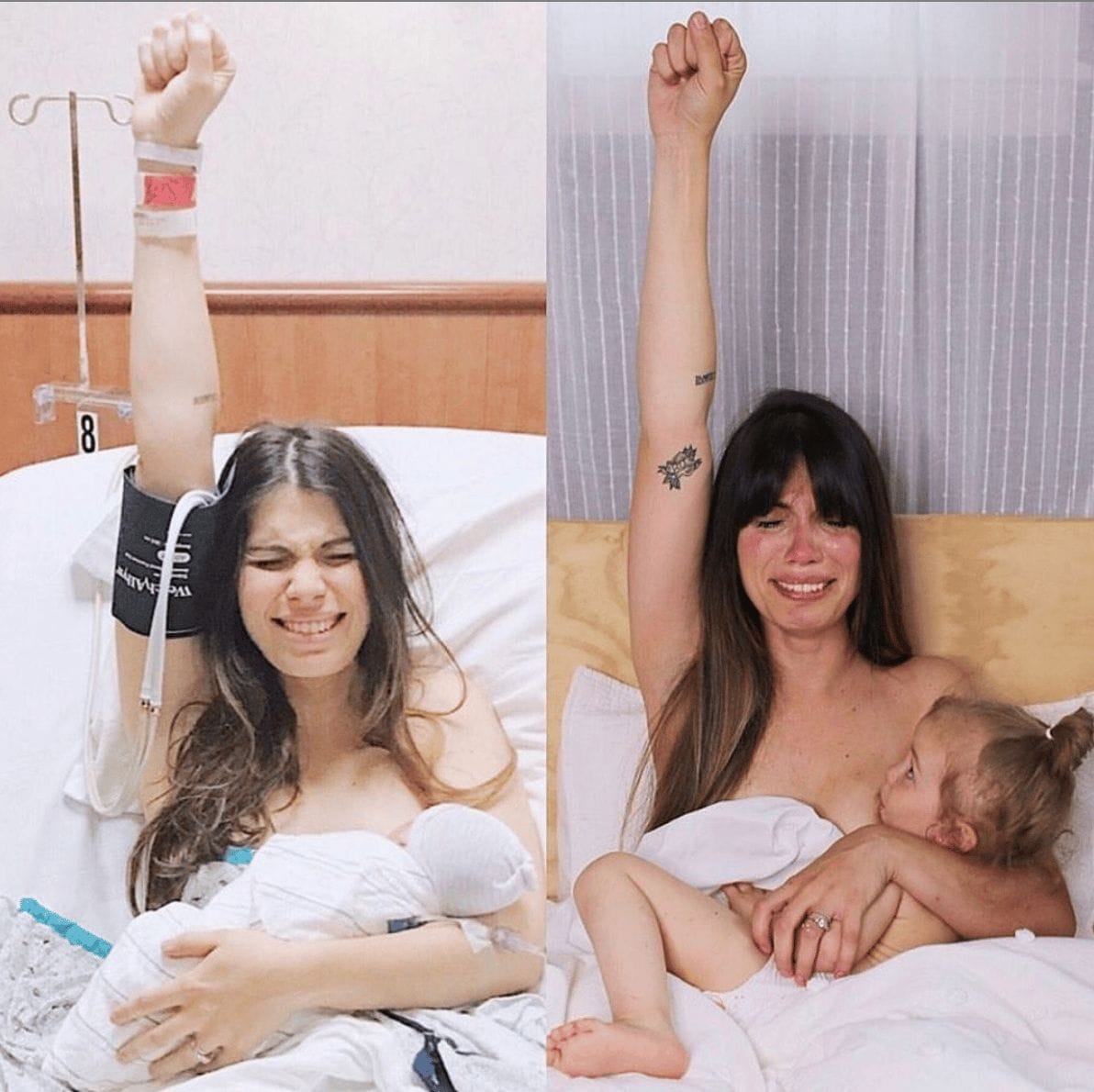‘You’re a mother, not a failure’: On the day I gave up breastfeeding

Breastfeeding didn’t work. Was I a failure?
Our sweet baby girl made her way into our arms a full 3 weeks before her due date and just 3 days after she would have been considered premature.
She was 37 weeks, 4 days.
I still remember hearing “5 pounds, 4 ounces” called out in the delivery room and thinking, “gosh, that’s tiny!” but I was instantly reassured when the nurses were beaming and congratulating and handing me my daughter to hold for the very first time. After all, they wouldn’t be doing that if something was wrong.
We cooed with awe and celebrated with joy for the next two days in the hospital. I knew breastfeeding would probably be tricky (the Internet at large prepares you pretty well), but I wasn’t ready for what was about to ensue. Ella could barely stay awake, barely latched and just didn’t seem to care about the idea of feeding. Each nurse did their best to help but nothing worked. A lactation consultant met with us on the morning we left and gave us a routine to use at home to teach Ella how to breastfeed while also helping my milk come in.
It went something like this: We would practice breastfeeding (10-15 minutes), then I would finger-fed Ella some formula with a tiny tube taped to my finger (20-30 minutes), then I would pump (20 minutes). This hour-long routine repeated itself every 2-3 hours – so I would have 1-2 hour breaks in between each session. 1-2 hour breaks to do all the stuff that those pictures on Instagram (with perfectly adjusted filters) tell you to do: skin-to-skin, soak in the moment, take sweet newborn photos, maybe get some sleep?
In reality, all I did during those breaks was dread the next hour-long battle of breastfeeding.
Because here’s how it felt:
We would practice breastfeeding, but Ella continued to struggle and I sensed that she began to recognize what was about to happen and would start to cry. For 10-15 minutes, I would C-hold my boob while holding my crying newborn while feeling like a failure (and usually crying myself).
Then, we would break out the formula and finger-feed (using the SNS method, for those pro-moms out there). A small tube filled with (what felt like) liquid failure was sustaining my daughter better than my body could. At first, I performed all the feedings because if I couldn’t breastfeed, the least I could do was be the one to feed my daughter. But after a few days of very little sleep, my mom and husband stepped in to help with this step so I could get some extra rest.
Finally, I would hand off my baby to someone else and attach that boob-sucking machine to my chest. For 20 minutes, I listened to that “woosh woosh” sound of the pump, hoping that next time, it would go differently.
What was supposed to be a natural, beautiful process of a mother’s body providing nourishment for her baby had been hijacked by tubes and breast pumps and plastic. Desperate, I read all the articles, tried all the tricks, consulted a few lactation consultants, talked to a ton of mom-friends—all in hopes of making it work.
Yet there I was, standing in the pediatrician’s exam room during our 3rd follow up visit because Ella wasn’t gaining weight fast enough. My 2 week-old daughter was so tiny that the carseat buckle covered her entire torso. My world stopped when my mom had to pry her from the car seat while I was driving because her precious little body had turned blue. She wasn’t getting enough oxygen because the weight of the car seat buckle was too heavy on her chest.
The doctor was kind but concerned as she explained possibilities of this episode ranging from “she could just be taking her time gaining her weight back” to “we may need to bring her back to the hospital if she turns blue again.” She told me that we would need to continue the routine of around the clock feedings for another week and left me with this: “You can still try breastfeeding—but if we are still not seeing improvement by next week, we’ll have to switch to bottles to measure how much she’s consuming.”
Tears stung my eyes and my heart burst with ache and anxiety and what the hell am I doing so wrong.
My nerves were raw and my body was weak—but that moment at the doctor’s office, I experienced something for the very first time: I made a decision that was best for my baby and for myself, a decision that went against the norm but was oh so necessary for us.
And it wasn’t so much a conscious decision as it was a rising up of this new side of me I didn’t know.
The mother inside of me knew that we needed to give it a break.
For the sake of my daughter’s health and for the sake of my sanity, I put aside the goal of breastfeeding and focused entirely on the wellbeing of my baby.
I realized on that day that the point of breastfeeding is connection—snuggles, intimacy, getting to know each other. It’s bonding with the little person who called you ‘home’ for nine months before beginning life on their own.
And sadly, I realized that I was so very focused on making breastfeeding work that I had come to dread holding my own daughter. Not because of anything she was doing, but because I felt like a colossal failure every time she was in my arms.
So, I gave myself permission to stop breastfeeding.
All of our actions towards our children are rooted in love. Giving up breastfeeding was a decision I made in love for my daughter. It was hard and I mourned for a long time after that day. I felt like I had to apologize to anyone who innocently asked, “How’s feeding going?” Yes, breast milk has a ton of amazing attributes for baby. And yes, I pumped exclusively for four months because I wanted to give her as much of it as I could. But I cannot put to words the relief I felt I let myself off the hook. I could hold my baby and experience all the love and joy you hear about from new parents.
I no longer felt like a failure. I felt like a mommy—and that’s all I really wanted to be, anyways.


































